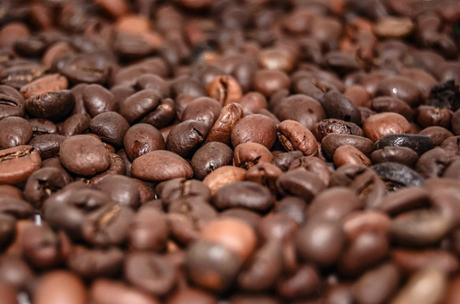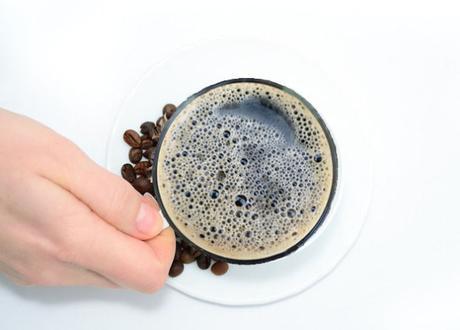
Joel Kodner used to rely on energy drinks to get him through the day. What spark he couldn't muster on his own would come from a 12-ounce can of Red Bull or 8 ounces of Redline.
Until he came bean-to-face with a new obsession.
In 2014, the brewer at Florida's Due South Brewing Co. traveled with coworkers to Fort Lauderdale's Argyle Coffee Roasters, which focuses on specialty grade, single origin coffee beans. Through an afternoon of "cupping," the coffee-specific slang for a tasting, Kodner experienced bold flavors he never would have expected from Maxwell House or Folgers as he sampled coffees made with beans from Costa Rica and Brazil.
"It blew my mind how these guys at Argyle talked like brewers," Kodner said. "A few extra minutes of roasting or few degrees in brewing temperature can really change the flavor profile of the same exact bean."
After sipping his way through various roasts, Kodner was hooked. He doesn't rely on energy drinks anymore.
At the time, Due South's Cafe Olé Espresso Porter was Kodner's favorite beer. The stage was set, but it was that trip and its serendipitous outcome that created a tighter attachment to the coffee-forward brew. Perhaps fittingly, you can probably draw a direct line from that experience to today, with Kodner acting as the man behind Twitter's @TeamCoffeeBeer, a handle dedicated to championing all things its name suggests.
"Coffee beer is kind of my favorite thing right now," Kodner said. "It's definitely something that's getting bigger."
He's not the only one thinking that way. From new brand rollouts to festivals celebrating all things coffee beer, the style is showing American drinkers that life exists beyond the hop. As the coffee industry trends upward alongside beer, a natural partnership is forming. The small beans most associated with travel mugs and morning commutes aren't just an afterthought for beer lovers or brewers any more.
To get a sense of how far coffee beer has come in recent years, one barometer may be the Great American Beer Festival. In 2015, the top-five entered categories were the usual suspects: four versions of hop-forward beers, from session IPA to Imperial IPA, and the rare and beloved barrel-aged strong beer. The sixth-most entered category?
Coffee beer.
Of those six categories, coffee beer has seen the highest growth rate of entries in the last five years. While its 149 entries in 2015 is dwarfed by American IPA's 336, it's only a dozen behind American-style Pale Ale.
It may be an apples to crab apples kind of comparison, but when pitting coffee beer's rise against other highly popular categories, the percent growth of coffee beer entries can't be ignored.
(*Note that the "Session IPA" category was new in 2015.)While those submitted coffee beers are undoubtedly dominated by porters and stouts - only two beers outside of those styles have medaled at GABF in the last five years - the traditional mixture of dark beer and dark beans doesn't have an stranglehold on the style. Stouts and porters are naturally going to appear more often as the most commercially-viable options for packaged coffee beer brands, but look at individual breweries and what they're serving and you'll find more exotic offerings.
Maybe it's Stone Brewing or Mikkeller's coffee IPAs, or Schafly's Double Bean Blonde, or Old Town's Warp Speed Coffee Pale Ale, or even Sixpoint's C.R.E.A.M.
Despite how traditional the mixture of coffee and some beer styles may be, the truth is there are no limits, and it's catching on fast.
"There are many newer breweries looking to emulate the use of ingredients in creative ways who have been inspired by great breweries that have existed for a long time," said Paul Schneider, brewer at Napperville, Illinois' Solemn Oath Brewery, which made about 30 different coffee beers in 2015. "There's a feedback loop in craft beer of pursuing processes and ingredients that are new to the territory and this is a piece of that."
Pivotal to this growth, Schneider said, is the rise of coffee roasters alongside craft breweries. While historical data of roasters is hard to come by, one estimate has today's industry at 1,200 roasters spread across the U.S. However, it's easier to show American interest in an artisan cup of coffee. The number of "specialty" coffee shops in the U.S. went from 3,000 in 1993 to nearly 30,000 by 2013.
While coffee drinkers are showing greater appreciation for carefully created cups of Joe, the unique attributes crafted from the beans are showing up in beer, too. For Schneider, that means partnering with nearby Intelligentsia Coffee to make witbiers, IPAs and Belgian dubbels that pull flavors from beans mimicking papaya, mango, lemongrass, lime and more.
"I love challenging people's conceptions of what coffee is and what coffee beer can be," Schneider said. "There's a lot of ground that hasn't been tested yet."
His guess - and that of others - is that the exploration and interest in what can be done with coffee and beer is far from its peak. One of the biggest reasons why, Schneider said, was because coffee and beer share fans. From their agricultural roots to artisanal nature and the ability to make both at home, aspects of each culture overlap in an ability to capture and captivate drinkers. Trends we see in one industry may very well apply to the other.
For example, similar to the rise of craft beer and the decline of macro options, the National Coffee Association found that consumption of gourmet coffee went up to 34 percent in 2014 as "non-gourmet" fell to 35 percent. Millennials are leading the charge, just like in beer, and overall, people are willing to pay more for better quality coffee, just like a flavorful pint of beer.
A certain DIY nature also connects the two. As the record number of homebrewers marches upward, so too does a focus of at-home specialty coffee, led by high-tech machinery.
Mostly, it all showcases that interest is skyrocketing for coffee, beer and wherever the two may meet.
"When you're around people who have a passion for something, that's a contagious thing," said Michael Kiser, founder of Good Beer Hunting, who, along with World Barista Champion Stephen Morrissey, created coffee beer festival Uppers & Downers. "You can either resist and laugh them off as fools, or you recognize something in yourself."
There's also flavor to consider. More than ever, beer drinkers are seeking out products that provide intense sensory experiences. Just look at the rise of the new, aroma-focused IPA or the rapid increase of sweetened alcoholic options. Coffee, with its unmistakable taste and smell, is the perfect ingredient to add a jolt of excitement to just about any style. Even a coffee Berliner weisse can be found at New York City's Greenpoint Beer & Ale Co.
"For a long time, most coffee beers kind of sucked," Kiser said. "Nobody was making a beer with coffee in mind. They were making beer with coffee flavor in mind."
But that's changing.
This February, about 1,200 coffee beer fans gathered in Chicago for the latest Uppers & Downers event, which partnered those from the beer and coffee industries to produce three varieties of styles:
- Roasty Toasty - "traditional" coffee beers like porters and stouts.
- Light Bright - a focus on goldens, pales, IPAs to highlight lesser known flavors of coffee, such as citrus and other fruits.
- Culture Clash - Ciders, saisons and sour beers. Its description reads, "You're not ready."
Among some of the favorites from the festival, all of which include coffee, Kiser pointed out Whiner Beer Co.'s sour saison, Angry Orchard's bourbon barrel-aged cider, 5 Rabbit's Cascara Beeliner wiesse and three variations of Solemn Oath's Muerte Double IPA.
Other coffee beer festivals have taken hold, too, like the Northwest Coffee Beer Invitational or the Baker's Dozen Coffee Beer & Doughnut Festival. It may sound niche at the moment, but events don't sell tickets and tokens unless there's a strong interest, let alone do it for years in a row. At Schneider's Solemn Oath, anniversary parties are an excuse to break out specialty brews, which usually includes six to eight coffee-focused beers.
"The longest lines are always for our barrel-aged and coffee beers," he noted.
So where does the style go from here? Schneider believes that as new coffee roasters continue to pop up across the country, brewers will find themselves flocking to the businesses not just as an excuse for collaboration, but to learn about how coffee acts as an ingredient, not just a flavor.
In the same vein, Kiser admits that progress is being made in how the beer industry thinks about coffee. But it's not just about getting drinkers and brewers excited about coffee beer as much as it's about creating a better understanding of coffee and what it can do for beer.
"I'm going to be a little bummed out if the conversation gets here and it's just ho-hum coffee stouts," he said. "That would miss the whole point."
From the looks of it, Kiser shouldn't have to worry too much. Even though spring and summer may put some brands into hibernation during warmer months, breweries continue to make coffee beers at a record pace and from the looks of it, people are happy to fill their pint glasses with them all the same.
Just ask Kodner and his growing members of Team Coffee Beer.
"These beers can have an incredible new character that goes beyond malt and roastiness," Kodner said. "It's the combination of two of the most popular drinks in America. It's the best of both worlds."

"Don't drink to get drunk. Drink to enjoy life." - Jack Kerouac
Additional photos courtesy of Eva Deitch for Good Beer Hunting, Solemn Oath Brewery and Joel Kodner.
